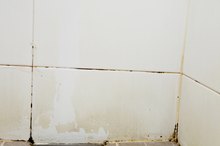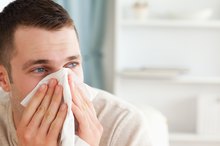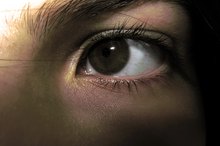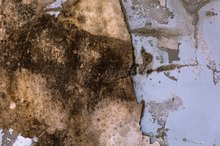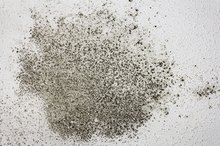Symptoms of Inhaling Mold
Molds are naturally present in the environment. The spores are so small they cannot be seen by the naked eye. However, they play a large role in the decomposition of organic matters in the outdoors, such as breaking down the components of fallen leaves or dead trees. However, when found indoors, mold spores pose a serious health risk. The type and severity of the symptoms of inhaling mold are dependent on how much mold was ingested or inhaled, and they also vary based upon the age of the person and the person’s sensitivities or allergies.
Allergic Reactions
One of the most common symptoms of inhaling mold is experiencing allergic reactions. These symptoms resemble those of hay fever; they include sneezing, runny nose and watery eyes that appear red. You may also experience skin rashes (or dermatitis), nasal congestion, sensitivity to light, headaches, and fatigue. People with asthma problems are highly susceptible to attacks which include wheezing, tightening of the chest and difficulty in breathing.
Irritations
What Are the Effects of Breathing in Mold or Mildew?
Learn More
Inhaling molds can cause irritation of the eyes, skin, nose, throat, and lungs. Even people who are not allergic to mold may experience these symptoms.
Infections
People who have weakened immune systems (either suffering from an illness or caused by immune-suppressing drugs) are vulnerable to opportunistic infections caused by the inhalation of molds. They attack the eyes, skin and lungs. These symptoms will not be experienced by people who are healthy, but they may be prone to common skin diseases such as athlete’s foot and yeast infections.
Other symptoms
Physical Symptoms of Mold Illness
Learn More
Here is a rundown of other symptoms that are experienced by inhaled mold sufferers. Not all of the symptoms may be present in each person, but here are some that have been experienced by others after inhaling mold in various quantities: sudden onset of severe abdominal pain, extreme muscle aches and chronic pain, tightness or pain in or around the chest wall, very dry eyes, hoarseness of the voice, loss of concentration, short term memory loss, confusion, extreme blood pressure (either high or low), lowered body temperature, nosebleeds, mouth sores, hair loss, hearing loss, spasm of legs/feet/toes, vertigo, tingling or burning sensation in the hand or feet, nail infection, sudden weight gain or loss, painless blood-like skin blisters, blurred or distorted vision, sleeping for long periods of time, constipation or diarrhea, seizure-like episodes, pinhole-sized pupils, and edema. When any of these are present, it is best to consider the presence of mold in your environment.
Mold Prevention
What do you do to prevent mold? Control moisture. Look around your house look for signs of mold growth or water stains. Check out the most common areas for mold to thrive--underneath the carpet, behind the wallpaper, inside the cabinets in your bathroom and kitchen, or any other areas where you find wet and damp spots. If you find a mold spot, clean it up. Address any water problem (such as leaky or busted pipes and holes in the roof) causing it. If the job is too big for you to handle, call on the professionals to make sure that a thorough job is done in eliminating those problem areas. However, before any cleaning up is done, be sure to keep people who are susceptible to mold infections out of the house to prevent further exposure.
Related Articles
References
Writer Bio
Amy Jorgensen has ghostwritten more than 100 articles and books on raising and training animals. She is also an amateur dog trainer. She has also written more than 200 blog posts, articles, and ebooks on wedding and party planning on behalf of professionals in the field.
